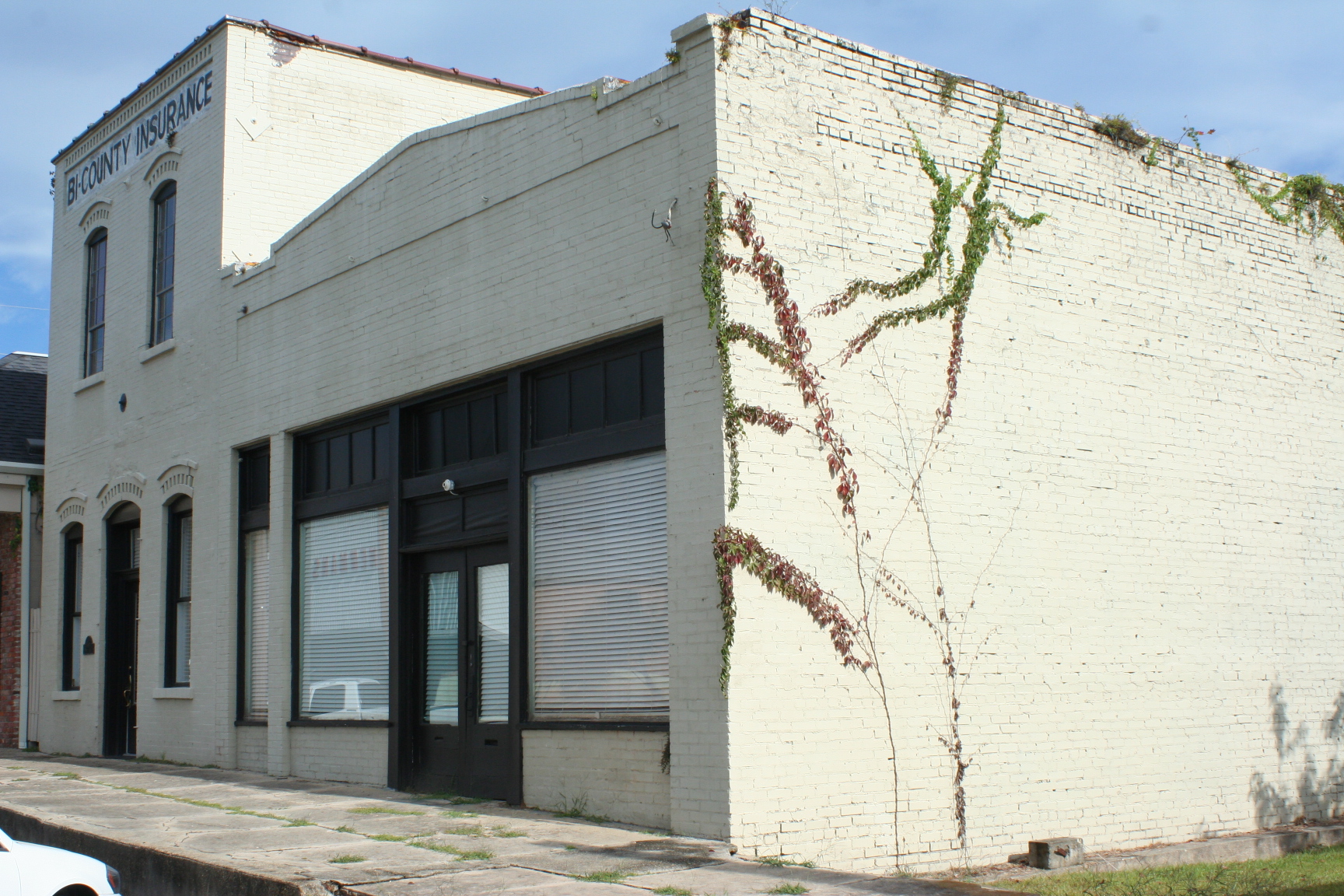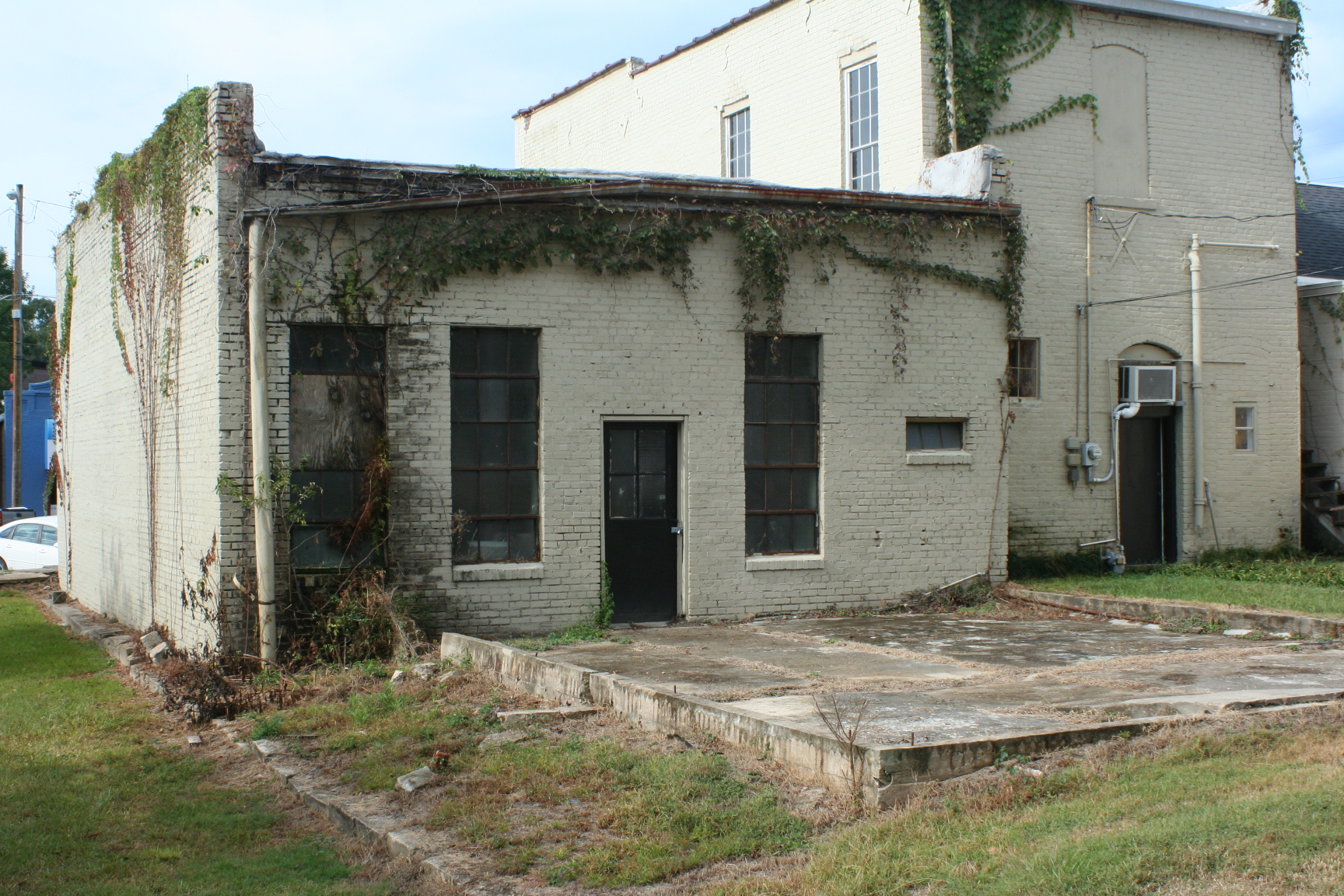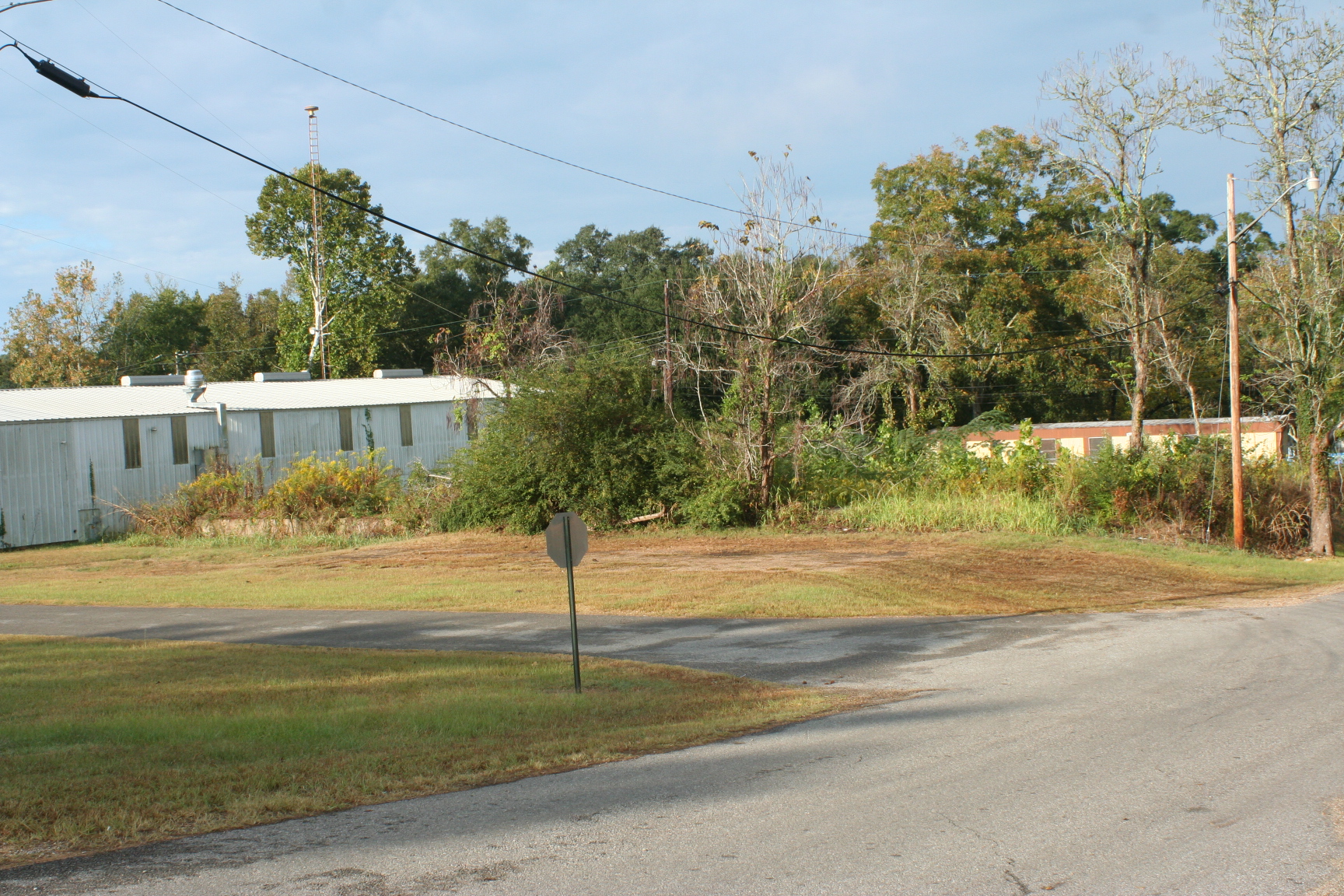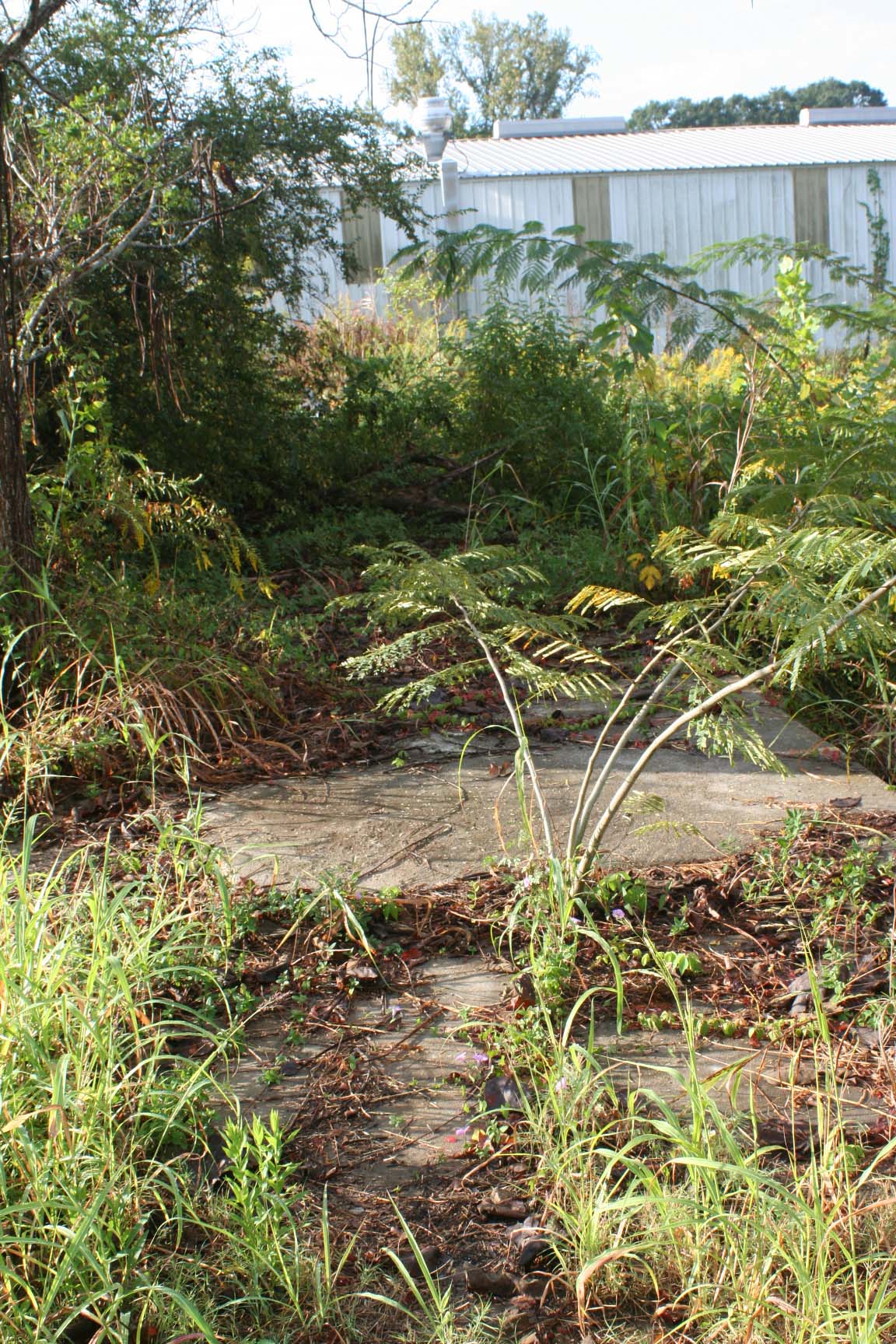Richardson's Cash Grocery
and
The Brick Store
My grandfather Clarence J. Richardson (b. March 12, 1896; d. February 13, 1972) was an independent grocer and merchant. Here is a tribute to our grandfather -- Granddad Richardson -- that was written by my brother.
Clarence James Richardson, Sr., lived most of his life in Norwood, Louisiana and Centreville, Mississippi. He was my maternal grandfather. He was married to the former Annie Lee Dudding and the father of four children: Mary Christine (Teena) Richardson Hemphill; Annie Lee (Babe) Richardson Schlatter (my late mother); Clarence James Richardson, Jr. (deceased); and Mabel Dudding Richardson Savoie.
My mother wrote of him as follows:
"He began his work as a clerk in the office of Cohn Flour(?) and Feed Company in Baton Rouge, Louisiana. He came to Norwood to work at Bridges and West Mercantile (and cotton office and gin) where he kept books, then was a buyer for the store and then as a salesman for the wholesale division. When Bridges and West had to lay off most employees in the depression of the early 1930s he opened a grocery store in Centerville, Mississippi. In addition to that store (Richardson's Cash Grocery) he acquired the former Bridges and West store and operated it as 'The Brick Store.'"
"His mother died when he was five and the children (five of them) went to live with various relatives. He had only two or three years of formal schooling but was very proficient at math. Had a good knowledge of writing, spelling, etc., and was an avid reader. At 21 he became the substitute father to four half brothers and sisters. Established his own business in 1932. Served on the school board, town council, chairman of county Red Cross and on the Ration Board in World War II. He never felt that the world owed him anything and was first to help anyone in need."
"One thing he often said to me was 'The Lord Jesus never met an unimportant person.'"
Heart problems forced him to retire from the store in the 1960s. He stayed active doing woodworking and running the "pepper shed" in Centreville, where he had a workshop and bought peppers from local farmers for resale to Trappey's.
As my brother's narrative indicates, Granddad operated two grocery stores -- assisted, of course, by our grandmother, Annie Lee Dudding Richardson, and their children, our mother and her sisters and brother. This article is a brief introduction to the two stores; I will add articles relating my recollections of these two stores.
Richardson's Cash Grocery, Main Street, Centreville, Mississippi. This is the first store I remember. As soon as I was big enough, I "worked" in the store -- sweeping, running errands, getting merchandise off the shelf for shoppers, and doing the tasks a young boy could do. This was a grocery store, although we did sell 50- and 100-pound sacks of cattle, horse, and hog feed.
The Brick Store, Norwood, Louisiana. This store originally was a Bridges and West Mercantile store, part of a chain of such stores in Mississippi and Louisiana. It was a old country general store -- sort of the WalMart of its day. Merchandise included: groceries; meat; clothing, including shoes; hardware; guns and ammunition; cattle, horse, mule, and pig feed; parts for wooden wagon wheels; and more than I can remember -- the store also sold coffins (more about that in another article). Also on the store site was a railroad siding and loading dock along with a cotton gin. A cotton gin is a building that houses machinery used to separate cotton fiber from the seed -- cotton plants produce "bolls" -- snow white cotton, about the size of an apple, that consists of soft cotton fibers with the seeds enmeshed in the fibers. The gin separated seed from fiber.
As I recall, in the 1960's (possibly late 1950's) Granddad purchased the old Bridges and West store along with the loading dock and gin. He renamed the store "The Brick Store" and operated it as a general mercantile store until he and my grandmother retired in the late 1960's.
Richardson's Cash Grocery, Centreville, Mississippi
When Franklin Roosevelt instituted the National Recovery Administration to make loans for people to start businesses, my grandfather took a NRA loan, moved the family a few miles to Centreville, MS, and opened a grocery story, Richardson's Cash Grocery. Sadly, we have only this one photo of the store while it was in operation.
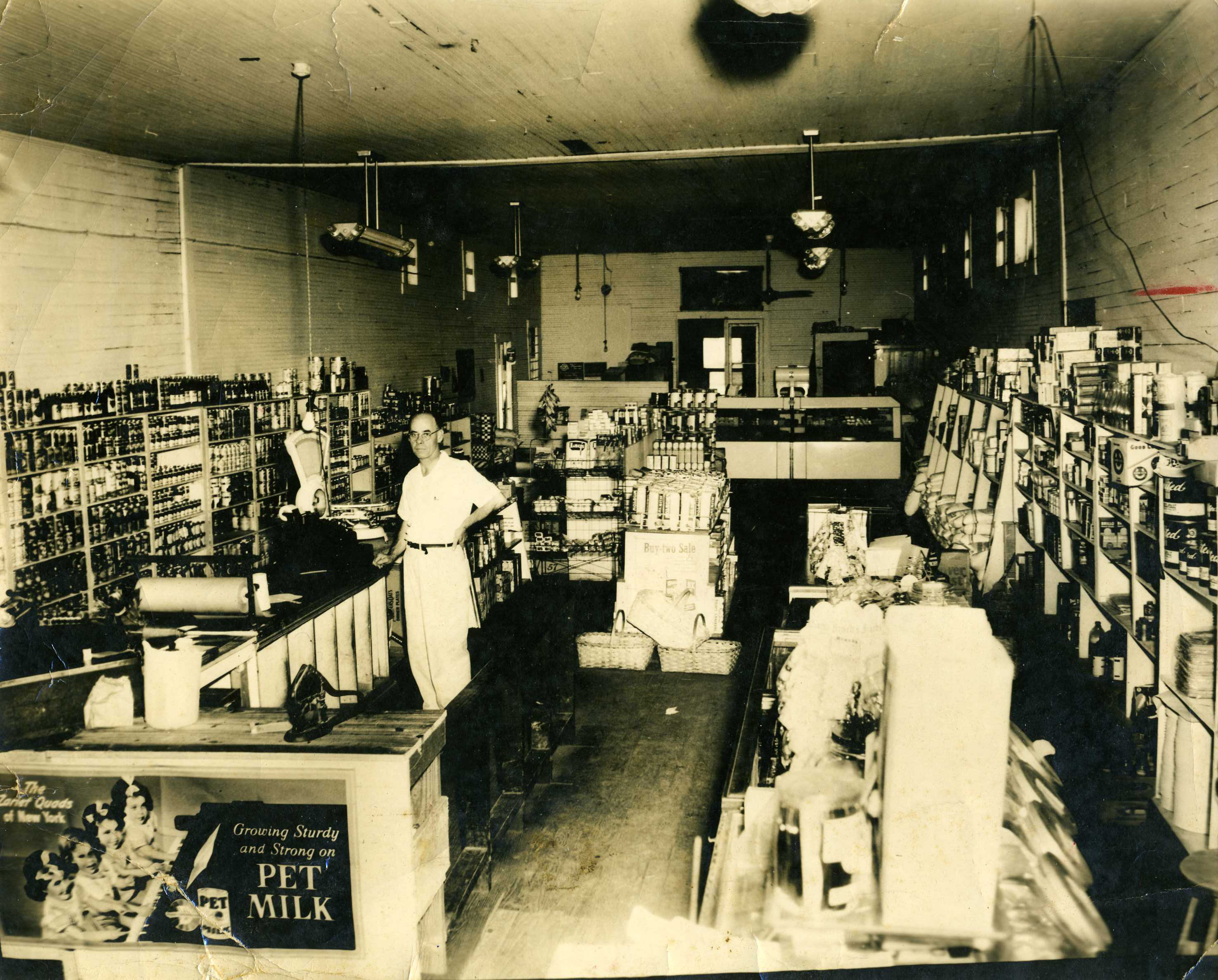
If you look closely at the photo, in the center, you see three baskets -- two on the floor and one on top of those two.
According to my mother, shortly after Granddad opened his grocery store he read an article in the Independent Grocer magazine suggesting that grocers make hand baskets available to their customers so the customers could select their own merchandise. At this time, the practice in grocery stores was for the customer to give their grocery list to the grocer or a clerk who would then fill the order while the customer waited. The magazine article suggested that, if customers walked through the store selecting their own merchandise, they may make impulse purchases, thus increasing their purchases. An old black man known as "Stuttering Charlie" lived around Centreville, MS, and Granddad asked Charlie to make three baskets and those three are the baskets in the photo. One of these baskets with the handle survived and I inherited it from my mother when she died in March 2007.
In the bottom right corner of the photo you see four round objects lined up going away from the camera. These are the metal lids on large glass jars -- you can see part of the jars. These glass jars held candy and other small products -- customers would unscrew the jars and take out what they wanted. My mother had one of these jars and it now belongs to my son, Joe Schlatter III (2010).
I am not certain when this photo of Granddad in his store was made. However, there is a hint in the photo. In the lower left corner of the photo is a Pet Milk advertising poster featuring the Zarief Quadruplets, born March 29, 1944, in New York City to Eleanor and Harry Zarief. The children in the photo appear to be between 2 and 3 years, which means the photo was made in 1946 - 1947. Of course, there's no way to tell if Granddad posted the advertisement recently, or, if it's been there for years. Thus, about all we can say is the photo was made in or after 1946
In October 2010 we visited Centreville and made some photos of the building that once housed Richardson's Cash Grocery
The building on the right once housed Richardson's Cash Grocery.
Rear view. Notice the cement slab extending from the rear. Also notice the remains of a slightly peaked roofline that now is all but obscured by vines. The cement slab was the storeroom with a tin roof extending out from the brick building covering the storeroom. As I recall, the storeroom was a wooden structure with a cement floor and tin roof.
The Brick Store, Norwood, Louisiana
I am not clear as to the history of the Bridges and West Mercantile and The Brick Store. As of mid-2016, I am embarking on a research project to try to fill in a lot of blanks in my knowledge of both enterprises.
According to corporate records on the Louisiana Secretary of State's website, Bridges and West Company, Norwood, Louisiana, was registered as a business corporation on January 21, 1910, and was dissolved in 1947 -- Notice of Dissolution dated 8/7/1946, Dissolution 5/13/1947.
Similar corporate records list The Brick Store, Norwood, Louisiana, established as a business corporation October 6, 1952; Notice of Dissolution 4/7/1958; Dissolution 9/8/1958. I am confused by these dates as I know my grandfather was operating The Brick Store well into the 1960's. My family (father, mother, brother, and I) moved from Mississippi to Knoxville, TN, summer 1951. Every summer we would return to Centreville, MS, where I would work in either the Centreville grocery store or in the Brick Store. My last summer to visit Centreville was 1961. I graduated from high school in June 1962 and worked that summer at LeConte Lodge in the Great Smoky Mountains. I never returned to Centreville except for very occasional brief visits in 1969, 1976, and 2010. I know my grandparents sold The Brick Store in the late 1960's.
Here is an early photo of the Bridges and West store. I found this image on a Louisiana state archives site, undated, estimated to be in the early 1900's.
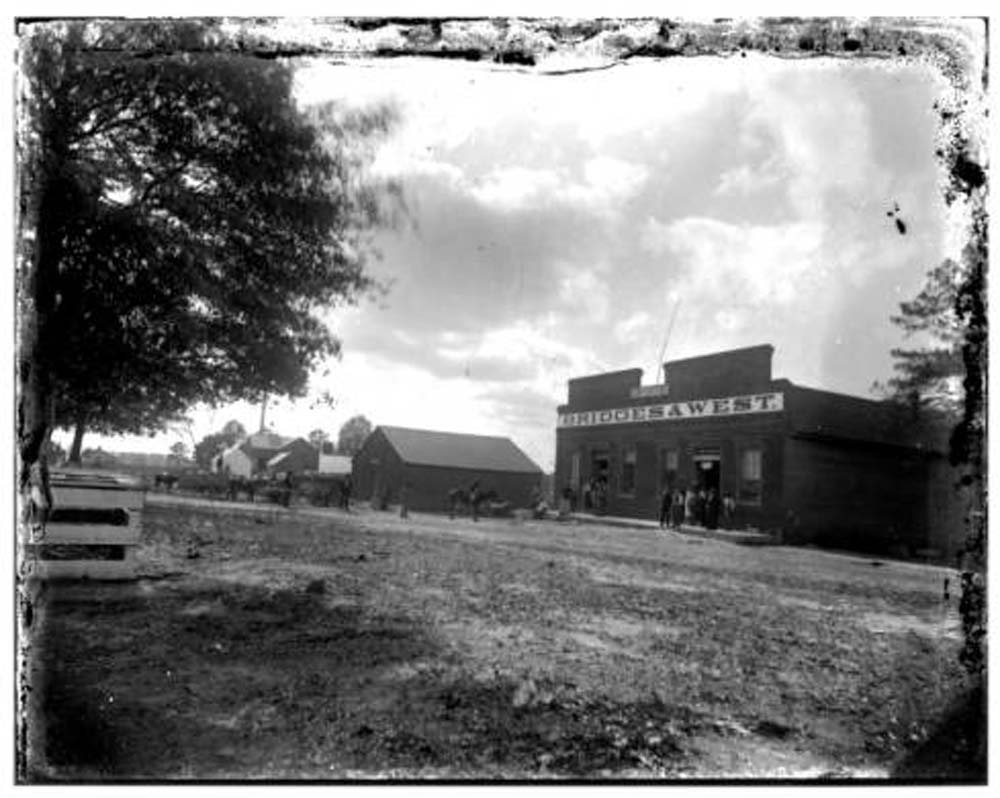
Notice the store name "Bridges & West." In the background is group of building, one of which appears white/light colored. Behind that building is another building the roof of which appears to be striped -- that's a tin roof with sections that are rusted. This group of buildings is the cotton gin associated with the Bridges and West general store. If you look closely at the area in front of the gin buildings you can make out mules and wagons. I suspect these are farm wagons loaded with cotton that has been picked and brought to the gin for processing to remove the seeds and to pack the cotton fibers into bales.
Bridges and West, circa 1904
This photo is titled "Bridges and West, Norwood, circa 1904". I do not recall where I found this photo, however, the front of the store is exactly the way I remember The Brick Store in the 1950's-60's. Note the dates on the front of the store -- 1886? or 1836? - I suspect it's 1886 -- 1904 -- is 1904 when the picture was made, or, later?
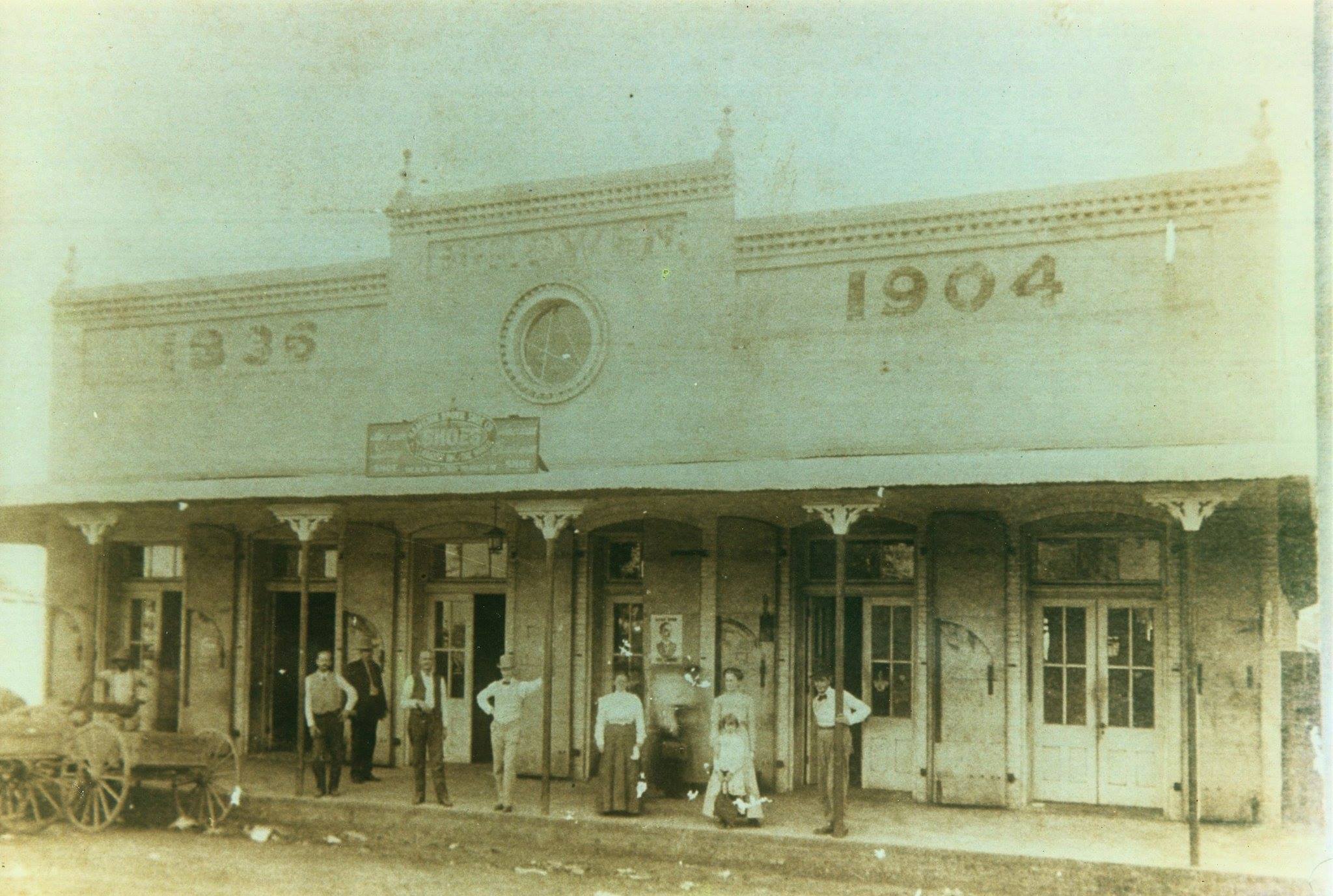
The Brick Store, 1984
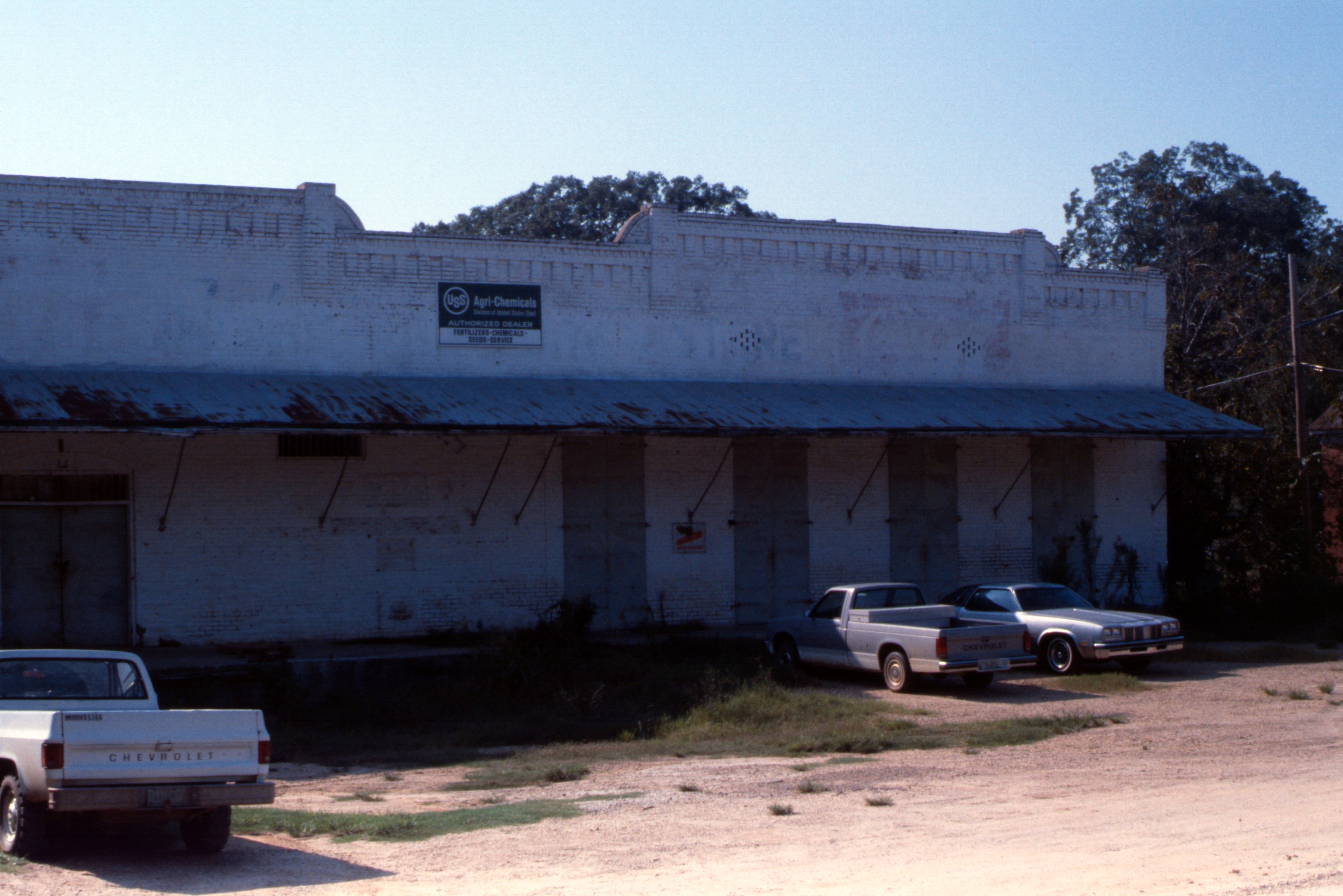
My brother made this photo in 1984. Here are some items in the photo.
The sign on the store reads:
USS Agri-Chemicals
Authorized Dealer
Fertilizers - Chemicals - Seeds - Service
Notice the metal canopy that extends across the front porch; note the area above that canopy appears to have been painted white to cover lettering. When I enlarge the photo, in the white-painted area above the metal canopy I can make out the words " ??? ????K STORE" -- this is the old "The Brick Store" sign. This is exactly how I recall the store from the days I worked there with my grandparents. The two vehicles on the right are parked on an old cement pad that covered only a small portion of the parking lot. In front of the vehicles is a cement porch that extended the width of the building.
The Brick Store, October 2010
In October 2010 when my wife and I returned to Centreville, MS, we also went to Norwood, LA, where I took these photos of all that remained of the Brick Store.
In this photo you see a line of brush and weeds beyond the stop sign. Look closely and you'll see a cement pad and, behind it, buried in the weeds, a cement structure. The cement pad in front of the brush and weeds is the cement parking area that I described in the 1984 photo. The cement structure hidden in the brush is the front porch that extended the width of the store. The next photo has an outline of these two structures.
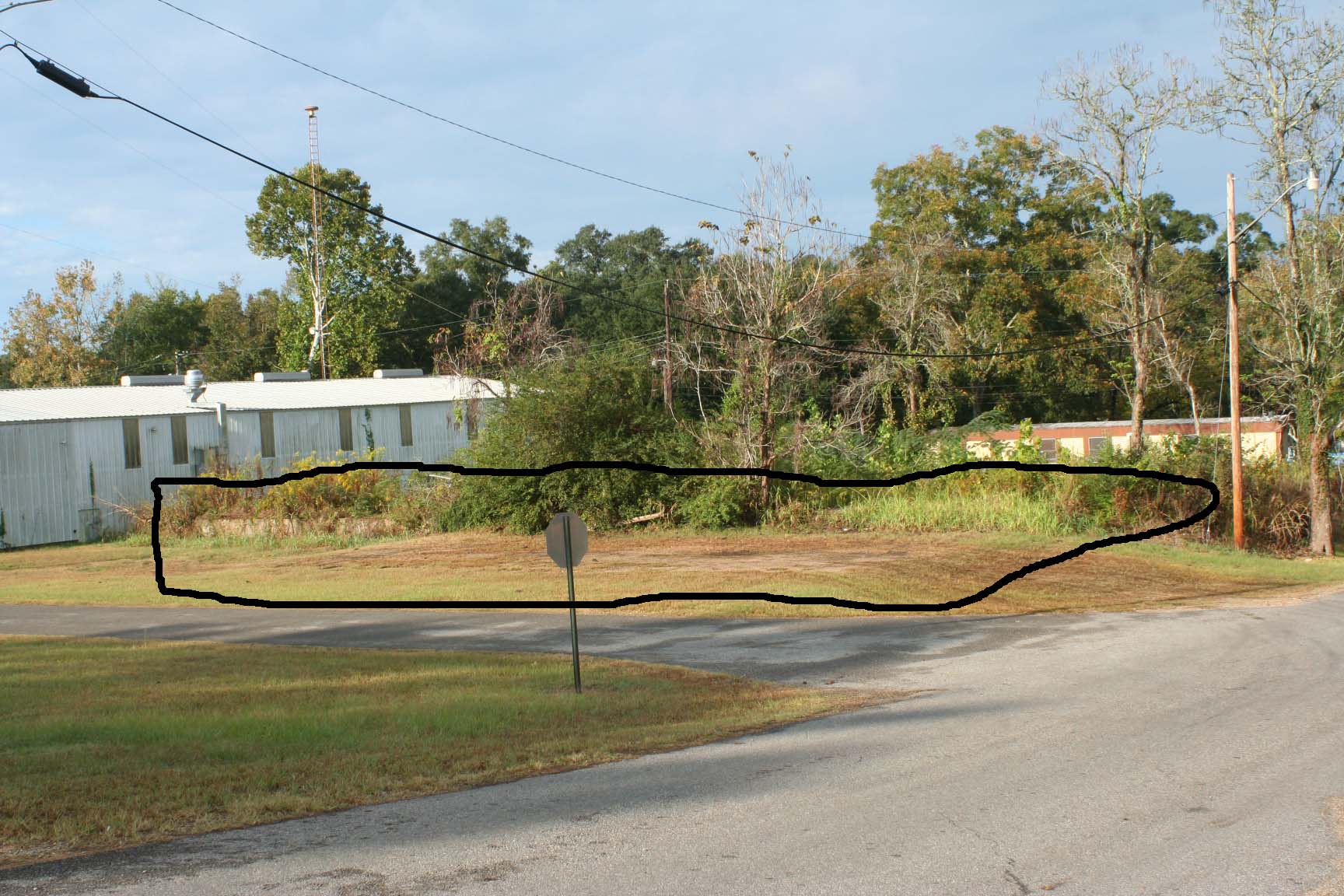
In the next photo is a close-up of the cement front porch hidden in the weeds.
More to come
As of June 2016, I am writing recollections of Centreville, MS; Norwood, LA; and my grandparents, Clarence and Annie Lee Richardson. I'll add those recollections as they are completed.
